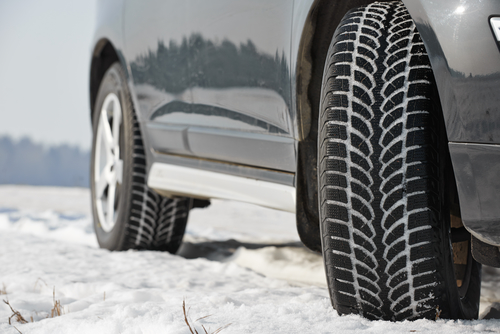Winter in Germany requires pragmatism, punctiliousness and preparation. All of which, luckily, are German hallmarks. In this guide, we are going to get German; that is to say, practical about winter and how to prepare for it. This includes not only preparing yourself, but also your home and car.
Preparing Your Home
Heating
Most homes in Germany are equipped with central heating, which means that water is heated centrally, normally in the basement, and distributed to radiators in each apartment and room through a network of pipes.
You can control the heating in your apartment by adjusting the thermostat on each radiator.
Most thermostats in Germany are numbered from zero to five. These numbers do not stand for heating power but rather desired temperature.
This can be confusing for newcomers as the relation between setting and temperature is hardly obvious. This is a guide to which number settings heat to which temperatures:
• Zero = 14°C
• Two to three = 18°C–20°C
• Three to four = 20°C– 25°C
If you are still in the process of looking for a home in Germany, be sure to put central heating on your ‘must have’ list! A few homes have electric or stove heating. Both of these heating methods are expensive, time-consuming and inefficient. The winter is long in Germany, so do not underestimate the necessity of central heating.
Making sure your heating is working properly is also important. It is common practice in German to turn the central heating on in the beginning of October.
If you live in an apartment complex, the Hausverwaltung, or property managers, will be in charge of central heating, including maintenance.
Nonetheless, it is a good idea to ensure that each of the radiators in your apartment are working properly. It is sometimes the case that air gets trapped in individual radiators and prevents water from circulating properly.
If your radiator isn’t warm enough, this is likely to be because of air in the heater. Luckily, this is an easy problem to fix. You can ventilate your radiator, which is easy to do without the help of a specialist. This webpage offers detailed instructions on how to ventilate, or entlüften, your radiator. The instructions are in German but if you are using a Chrome browser you can translate the page. Otherwise, you can translate the instructions here.
Ventilating your radiator once a year will not only keep you warmer over winter but can also save you up to 15 percent on your energy bills.
Learning how to heat your house properly is perhaps the most important winter preparation you can do. Heating efficiently will not only keep you warm but will reduce your bills, which can be considerable over the winter.
Keep the temperature constant
The optimal room temperature is around 20°C, but this can vary depending on the room. For instance, bedrooms should be heated less as lower temperatures are better for sleeping.
Recommended radiator settings
During the day, set your radiator’s thermostat to between two and three in order to maintain a temperature between 18°C and 20°C.
During the night, set the thermostat between one and two for a temperature between 14°C and 16°C. In rarely used rooms, leave the radiator on one for 14°C
Don’t turn the radiator off at night
Some might find the logic of saving energy by keeping radiators on counter-intuitive. However, experts recommend not turning the radiators off at night but rather leaving them on low settings (1-2) to ensure that the apartment or house does not cool down completely, and thus needs to be warmed up again from scratch the next day. Turning the heating on and off costs more energy and money in the long run.
A good tip for energy-conscious folk: turn the heating down for half an hour or an hour before going to bed. The radiator will continue to heat for a while after it is turned down.
Don’t forget to heat unused rooms
Maintaining a temperature of at least 15°C during winter is essential for preventing the formation of mould in the house, which is why it is important to heat all rooms in the building, even if they are rarely used. If walls cool to temperatures below 15°C, condensation and mould can form.

Higher settings do not heat quicker!
German radiators will not heat quicker if you set them to five. As stated, the numbers indicate temperature rather than heating power. If you’re leaving the house, it is best to leave the radiators on the lowest setting; that way, you won’t come home to a freezing apartment that needs hours (and a lot of energy) to warm up again.
Close your shutters at night
Not all homes in Germany are equipped with shutters, but if you have them, remember to close them at night. Windows are the cause of much lost heat during winter. While drawing the curtains at night does help to create an insulating layer, closing the shutters is far more effective.
You can find out more about how to heat efficiently and save energy here.
Ventilate
When it is literally freezing outside, opening the windows might be the last thing you want to do. However, try to ignore that instinct, as letting fresh air into the house is essential.
Experts agree that the best way to ventilate is to open the windows completely at least once a day for five minutes to allow the air in the apartment or house to be completely exchanged.
Experts advise against leaving windows in the apartment or cellar tilted for long periods of time as the air cools down the walls, which causes condensation and can result in mould.
Install a programmable thermostat
Programmable thermostats are not a standard feature of radiators in Germany, but they can be installed easily and at low cost. When you add one, your rooms will be heated according to your timetable, which will ultimately save you on energy costs as well. You can find programmable thermostats online at Grünspar and Tink.
Check your door and window seals
Heat is quickly sucked out through damaged or worn out window and door seals. Before pumping heat, and thus money, into your home, ensure the seals on your doors and windows are functioning properly.
Ensure your gutters are cleared
Gutters need to be cleared of all the twigs and leaves from autumn before the first snow. You should take care to ensure that downpipes are also clear so that water does not accumulate and later freeze, bursting the pipes or gutter.
Preparing Your Car
Fit winter tyres
By law, every vehicle in Germany must be fitted with special tyres (Winterreifen) for winter. While the law does not explicitly set a timeframe for when they must be fitted, most drivers do this from Oktober bis Ostern (October until Easter).

Another helpful formula to help ensure your car is prepared for winter is 4x4x4. This means you must have four identical tyres with a minimum 4mm tread at a maximum of four years old.
Remember: without correctly fitted winter tyres, your insurance will not cover you in the case of damage or an accident.
Keep snow chains ready
Most areas in Germany do not receive enough snowfall for it to be necessary to drive with snow chains. However, it’s always good to have some on hand, and it’s absolutely necessary if you are planning a trip into the mountains.
If you see a blue traffic sign picturing a tyre with chains around it, this means that you can only proceed on the road with snow chains fitted.
If you haven’t dealt with snow chains before, make sure that you are familiar with how to put them on before setting out into the snow.
Add antifreeze
Stop the fluids in your car from freezing by adding antifreeze to both your windscreen wiper system and cooling water. While you can add the antifreeze for the wiper system easily yourself, it may be best to leave the coolant system to an expert. Below are more details on getting a professional Winter-Inspektion for your car.
Pack ice scrapers…
…And a hand brush, too. It’s certainly a good idea to have a winter preparation stash in the back of your car throughout the season. As we like to say in Germany, es schadet nicht!
Check your battery
Car batteries bear extra brunt in winter so it’s crucial that you check that yours is healthy before the frost sets in. Defective or empty car batteries are the cause of many breakdowns, so ensure you won’t be the one standing in the dark, cold winter trying to hail someone with starter cables – which, by the way, are also a good thing to have in your winter stash.
Check your lights
It only takes a minute to hop in your car and double check all your lights. In the dark season, it is imperative that your lights are working reliably and are not covered by a layer of grit.
Get professional about preparing
Ask your local auto garage for a Winter-Inspektion. These are commonplace in Germany and are usually reasonably priced.
Preparing Yourself
Keep up your vitamin D
This is not always easy as the sun is pretty good at hiding during German winters. If you see it come out, seize the opportunity by popping out for a quick walk. You’ll need to make the most of every minute of sunshine as they are so infrequent.
There are also a plethora of vitamin D supplements available at German pharmacies. If you’re not sure which is best, ask your doctor or your local pharmacist.
A more modern option is to invest in a UV lamp. These contraptions basically give you a dose of the sun at home, emitting enough light to trigger vitamin D production in your body. You can read more about UV light lamps here.
Get the right clothes
Germany is a land that values practicality over fashion. You won’t see many freezing ankles or sexy Saturday night outfits here. What you will soon learn is that there is no such thing as bad weather, only bad clothes. So make sure you have the right ones.

Winter musts include:
Sturdy coat
Like the rest of the world, German people love a good puffer jacket. If you’re looking for something more stylish, why not make a day of going to the flomarkt, or flea market. There are always mountains of vintage and second-hand coats selling there for a low cost.
Thermal underwear
A good place to find inexpensive thermals is C&A. Outdoor shops such as Jack Wolfskin or the North Face also sell these, but at significantly higher prices.
Winter boots
You can find winter boots new in stores for around €50. However, investing in a better pair for around €100 pays in the long run. It is crucial that your boots are waterproof (winters here can be wet) and that they have a thick, sturdy sole which won’t lose heat.
Do you have any tips for surviving your first winter in Germany? Share your thoughts in the comments below, or answer the questions here to be featured in an interview!

